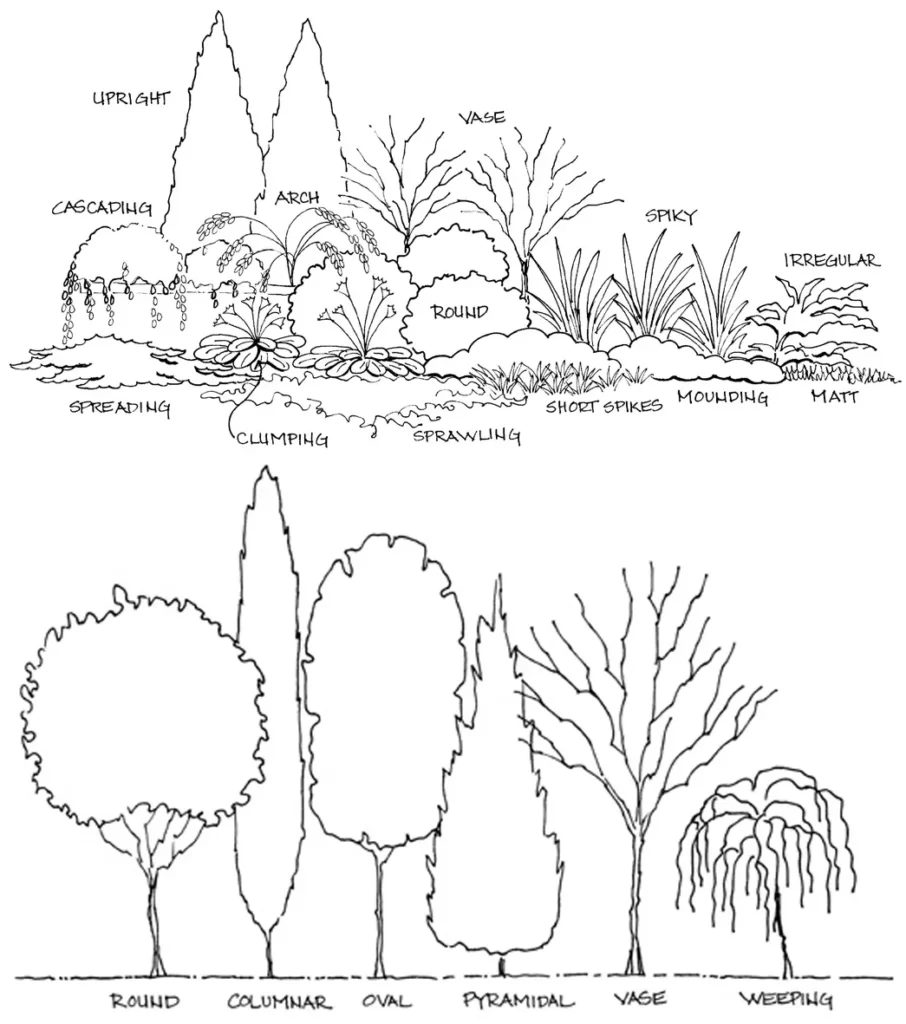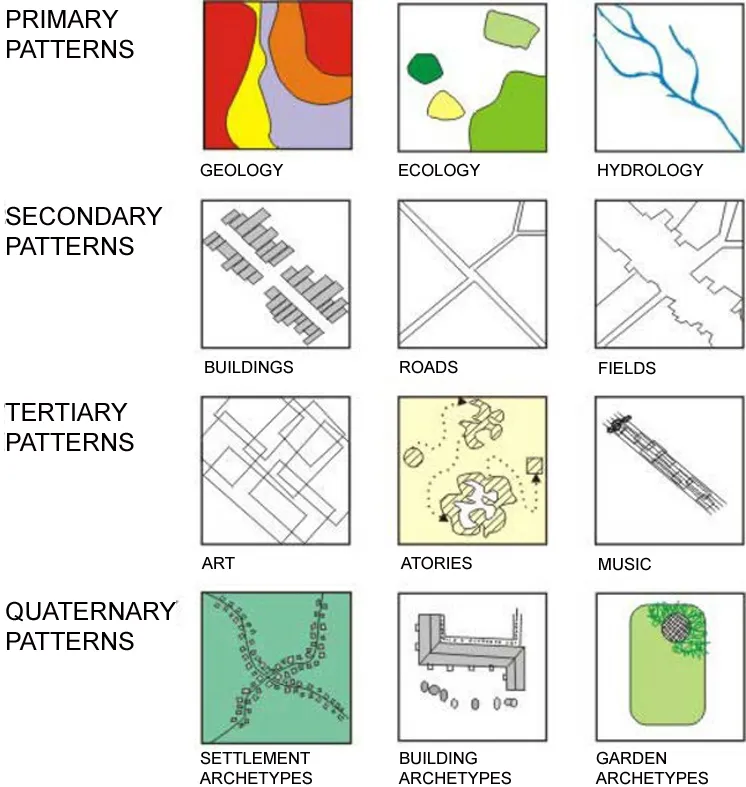If you want to know about the nature with landscape or types of gardens or Japanese landscape, please click the link.
Landscape generally refers to the physical features and characteristics of an area of land, including its natural and built elements such as mountains, valleys, water bodies, forests, buildings, roads, and other human-made structures.
Landscape can also refer to the practice of designing and planning the outdoor environment to create aesthetically pleasing and functional spaces. This can involve a range of activities, including planting and maintaining gardens, building structures such as paths and walls, and incorporating natural features such as rocks and water into the design.
- Landscape associates’ people and place — ‘Land’ signifies both place and people living there —- ‘Scape’ signifies association, relationship.
- Landscape hence denotes a place where processes happen thereby setting dynamic relationships by weaving together of many patterns.
- It can be divided into two parts one is Softscape and another is Hardscape
Softscape
- It comprises the animate, horticultural elements of landscape design, i.e., plants. Softscape elements are complemented by hardscape design elements.
Hardscape
- It consists of the inanimate elements of landscaping, especially any masonry work or woodwork. For instance, stone walls, concrete or brick patios, tile paths, fountains wooden decks and wooden arbors would all be considered part of the hardscape.
1) Meaning
- Landscape architecture is the profession which applies artistic and scientific principles to the research, planning, design and management of both natural and built environments.
- Practitioners of this profession apply creative and technical skills and scientific, cultural and political knowledge in the planned arrangement of natural and constructed elements on the land with a concern for the stewardship and conservation of natural, constructed and human resources.
- The resulting environments shall serve useful, aesthetic, safe and enjoyable purposes.
2) History
- In 1858, Frederick Law Olmsted, Sr., considered today the Father of Landscape Architecture, initiated a project that would redefine the industrial city.
- Historians credit the design and achievements of Central Park in New York City with having a tremendous evolutionary impact on park design, parkways, urban open space, pedestrian, and transportation systems.
- Olmsted’s innovations at Central Park addressed and influenced the core of urbanism and our environment today.
3) The origin of landscape architecture
- The name “landscape architecture” was invented by a Scotsman in 1828.
- It uses the ancient skill of garden designers (to compose landform with water, vegetation, structures and paving) and applies this skill to the man-made landscape.
- As Sir Geoffrey Jellicoe wrote in the landscape of man (1975): ‘It is only in the present century that the collective landscape has emerged as a social necessity.
- We are promoting a landscape art on a scale never conceived of in history’. Landscape architecture is set fair to become the mother of the arts.
4) Landscape architecture and garden design
- Landscape architects share with garden designers a concern for the planning and design of outdoor space.
- Like vets and doctors, they have similar knowledge and similar skills.
- The key difference is that landscape architects normally work for public clients (business and governmental) while garden designers tend to work for homeowners.
- The range of work undertaken by landscape architects extends from detailed design to the broad scale landscape planning.
It includes:
- Urban design and urbanisation
- Landscape architecture for public parks, greenways and cycling
- Landscape planning for mineral extraction
- Landscape planning for forestry
- Landscape planning for transport
- Landscape planning for water storage
- Landscape planning for river reclamation
- Landscape planning for new towns and green towns
5) Scope & objectives
- Landscaping design, development, planning and management aims to create and sustain habitats for people and other living things in ways which conserve and celebrate ecological relationships, cultural values and symbolic associations.
Landscaping tends to focus on:
- Urban design and urbanization
- Forestry
- Transport – highways, transportation structures, bridges, and transit corridors
- The planning, form, scale and siting of new developments
- Civil design and public infrastructure
- Parks, botanical gardens, arboretums, greenways, and nature preserves
- Recreation facilities, i.e.: playgrounds, golf courses, theme parks and sports facilities
- A landscape architect must consider the relationships between a building and its surroundings, the topography, walls, roads, and planting.
- He must be aware of the influence exerted by climate, and the relationships of earth, plants, water and building materials to create an architectural landscape integrated with the natural and man-made environment.
6) Relevance to architecture

- Gardens housing parklands streetscapes mixed – use development urban corridors cities
To buildings / structures
- A strong design focus is generated from an understanding of a place through landscape – the entire site (buildings and landscaping) behaves in a coherent manner.
- Sustainable development – balanced environment
- Adds visual interest
- Maximize Infiltration by storm waters management including rain gardens, green roofs, groundwater recharge, and treatment wetlands
- Slow Runoff
- Reduce sun glare on buildings by shielding from the west and south sides
To urban planning
- an ability to integrate urban planning with a detailed understanding of ecological processes
- Differentiate the public pedestrian zone from the private zone.
- Enhance pedestrian comfort
- Create a neighborhood identity
7) Characteristics
Landscape is characteristics by Elements of landscape and Principles of landscape as given below.
i) Elements
a) Line
- Bed lines – They are created where the edge of the plant bed meets another surface material, such as turf, groundcover, gravel, or patio pavers. They connect plant material to the house and hardscape
- Hardscape line- They created by the edge of the hardscape, which delineates the built structure.
- Plant lines – They created by long and narrow materials, such as a fence or wall.
b) Form
- Form is found in both hardscape and softscape.
- It is the dominant visual element that spatially organizes the landscape and often determines the style of the garden.
- Form is created through the outlines or silhouettes of the plants, by the void between plants.
- Compatibility of the various forms on the site is a major component of unity in design — one or two strikingly different forms are good for contrast and emphasis, but generally all other forms should have some similarities for a unified look.

c) Texture
- Coarse
Examples:
- Softscape – large leaves, leaves with very irregular edges, deep veins, variegated colors, thick twigs and branches, leaves and twigs with spines or thorns
- Hardscape – rough-cut stone, rough-finished brick, and unfinished wood with knots and a raised grain.
- Structure – Aged or old construction material that maintains a weather-beaten surface is often coarse in texture.
Fine
- Softscape – small foliage, thin leaves, grasses, thin stems, tiny and dense twigs, small branches, long stems (vines), delicate flowers
- Hardscape – smooth stone, wood or ceramic pots, glass ornaments, pool
Medium
- Softscape – medium-sized leaves with simple shapes and smooth edges. The overall form is typically rounded or mounding. Medium-textured plants act as a background to link and unify the coarse-and fine-textured plants.
- Hardscape – standard flagstone pavers, broom-brushed concrete, finished woods.
d) Colour
- Color in softscape and hardscape adds interest and variety to the landscape.
- Foliage typically provides the overall background colour for flower colours.
- Colours should be used to highlight more enduring elements, such as texture and form.
ii) Principles
a) Proportion
- Plants – relative to people, surrounding plants, structure.
- Hardscape – features like benches, tables, pathways, arbors, gazebos are most functional for people when they are in proportion to the human body.

b) Order
- Grouping of features based on similarities and then arranging the groups around a space or feature.
c) Repetition
- Repeated use of elements or features to create patterns or a sequence in the landscape.
- Example: grass (softscape), material (hardscape).
- Material can be used repeatedly throughout the yard for unity, but interest can be created by slightly varying the size, texture, or colour of hardscape material.
d) Unity
- It is achieved by linking elements and features to create a consistent character in the composition.
- Unity can be created by using design themes and styles.

- Emphasis by isolation of plant material in a container.
iii) Patterns / layout / composition
- The elements (visual qualities)— line, form, texture, colour and principles (guidelines) — proportion, order, repetition, unity of design are used to create spaces, connect them, and make them visually pleasing to the eye.

The study of landscape can involve various disciplines, including geography, ecology, architecture, art, and design. It can also encompass cultural, social, and historical aspects, as landscapes are often shaped by human activity and can reflect the values and practices of a particular society or culture.